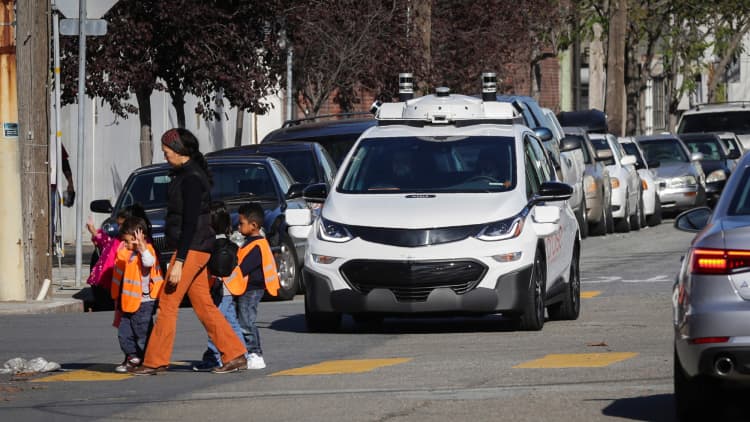
General Motors wants to create and cash in on operating a ride-hailing business featuring its self-driving vehicles.
"This business is potentially bigger than our current core business," GM CFO Chuck Stevens told analysts as the company unveiled its strategy for autonomous-drive vehicles.
In short, GM thinks it can make billions of dollars building and operating a fleet of self-driving cars, taking on Uber, Lyft, taxis and other competitors in the rapidly growing ride-hailing business.
Why are GM executives so confident they can make big money in a business where Uber, which dominates the industry, has failed to turn a profit?
It all revolves around GM's plan to drive down costs while expanding quickly in big cities.
Here's the plan:
- By 2019, GM plans to have a fleet of self-driving cars offering rides in cities where the ride-hailing business is big and getting larger.
- GM says operating its self-driving cars will cost 40 percent less per mile than other ride-hailing firms that have to pay drivers. This would give GM a huge profit advantage.
- As it refines the performance of its cars, GM has the capacity to rapidly build and deploy more self-driving vehicles to other markets around the world.
- Over the life of a ride-hailing car, GM could generate hundreds of thousands of dollars in revenue. That would dwarf the approximate $30,000 the company currently collects over the life of a new vehicle, most of which comes when the vehicle is sold.
"The return on invested capital will be significantly higher than what we're seeing in the core business," said Stevens.
But the big hurdle GM has to overcome is convincing the public and investors that it can go from building and selling cars to also operating a ride-hailing company featuring thousands of self-driving vehicles.
"The question is: 'Can GM deliver, and does Wall Street believe it?'," said Michelle Krebs, executive analyst for Autotrader.
The initial reaction by investors was skepticism. Minutes after GM announced plans to launch a ride-hailing program, shares dropped and stayed down on a day when the Dow Jones Industrial Average surged more than 300 points to an all-time high.


